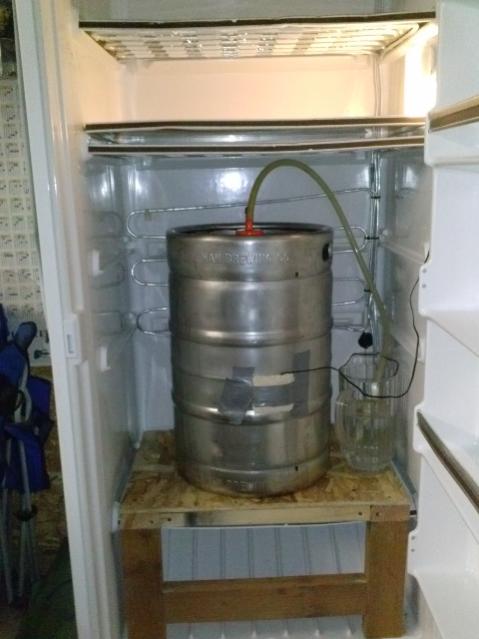So, I've wondered for a long time why some people preach that you should always, always, always use a blow-off tube. I think I've realized that they, for whatever reason, just don't use a big enough fermenter that allows the necessary head space for the krausen.
Obviously, there are exceptions to this. There is the occasional case of a beer fermenting wildly and over-flowing a fermenter which had previously provided adequate head space. Probably those cases can be blamed on some combination of over-pitching yeast, high fermenting temperatures, or some other mistake made by the brewer.
But why do people try to ferment a 5 gallon batch in a 5 gallon carboy? That doesn't make any sense to me. I mean, I know that when you have exactly 5 gallons in one of those, there is still a little bit of space left. But not nearly enough that I'd feel comfortable pitching yeast with it being that full.
I can't imagine that it is a matter of wanting to save space by using smaller fermenters, because that means you need something to catch whatever is coming out of the blow-off tube. So, you have an only slightly smaller fermenter, but an entirely separate container of some sort right next to it. Doesn't add up to saved space.
And also, don't you end up losing some of the final volume of the batch if it goes out through the blow-off tube? So, really, you end up wasting space where you could possibly fit another fermenter AND you end up wasting beer by inviting it graciously to go for a swim in some sanitizer.
I'm not aware of any beginner's equipment kit that comes with only 5 gallon fermenters. Except for small batch kits (Mr. Beer - 3 gallons? Brooklyn Brew Shop and other 1 gallon kits), they all come with at least one 6.5 gallon bucket/carboy, and then maybe a 5 gallon carboy to use as a secondary. So, it isn't a matter of newbies being led astray by the equipment they are introduced to as they begin the hobby.

Is there something I'm missing?
Obviously, there are exceptions to this. There is the occasional case of a beer fermenting wildly and over-flowing a fermenter which had previously provided adequate head space. Probably those cases can be blamed on some combination of over-pitching yeast, high fermenting temperatures, or some other mistake made by the brewer.
But why do people try to ferment a 5 gallon batch in a 5 gallon carboy? That doesn't make any sense to me. I mean, I know that when you have exactly 5 gallons in one of those, there is still a little bit of space left. But not nearly enough that I'd feel comfortable pitching yeast with it being that full.
I can't imagine that it is a matter of wanting to save space by using smaller fermenters, because that means you need something to catch whatever is coming out of the blow-off tube. So, you have an only slightly smaller fermenter, but an entirely separate container of some sort right next to it. Doesn't add up to saved space.
And also, don't you end up losing some of the final volume of the batch if it goes out through the blow-off tube? So, really, you end up wasting space where you could possibly fit another fermenter AND you end up wasting beer by inviting it graciously to go for a swim in some sanitizer.
I'm not aware of any beginner's equipment kit that comes with only 5 gallon fermenters. Except for small batch kits (Mr. Beer - 3 gallons? Brooklyn Brew Shop and other 1 gallon kits), they all come with at least one 6.5 gallon bucket/carboy, and then maybe a 5 gallon carboy to use as a secondary. So, it isn't a matter of newbies being led astray by the equipment they are introduced to as they begin the hobby.
Is there something I'm missing?





